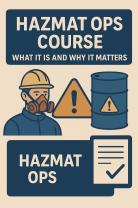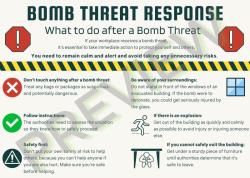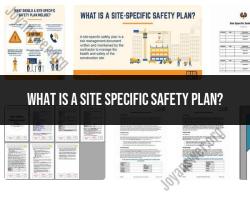What training does OSHA require?
The Occupational Safety and Health Administration (OSHA) sets forth various training requirements to ensure workplace safety and compliance with occupational health and safety standards. The specific training requirements can vary based on the industry, type of work, and potential hazards present in the workplace. Here are some key OSHA training requirements and general guidelines:
General Industry Training (29 CFR 1910):
Hazard Communication (HazCom): Employees must be trained on the proper handling and use of hazardous chemicals in the workplace. This includes understanding labels, safety data sheets (SDS), and potential hazards.
Bloodborne Pathogens: Employees with potential exposure to blood or other potentially infectious materials must receive training on the prevention of bloodborne diseases.
Lockout/Tagout: Employees involved in servicing or maintenance of machines and equipment must be trained on proper lockout/tagout procedures to control hazardous energy sources.
Fall Protection: Workers exposed to fall hazards must receive training on the use of fall protection systems and equipment.
Respiratory Protection: Employees required to use respirators must be trained on their proper use, maintenance, and limitations.
Construction Industry Training (29 CFR 1926):
Fall Protection: Construction workers exposed to fall hazards must receive training on fall protection methods and equipment.
Scaffolding: Employees working on or around scaffolding must be trained on the hazards and safe use of scaffolds.
Excavation and Trenching: Workers involved in excavation and trenching activities must receive training on cave-in protection and other safety measures.
Electrical Safety: Construction workers must be trained on electrical hazards and safe work practices.
Specific Industry Requirements:
- Some industries may have specific OSHA training requirements tailored to their unique hazards and risks.
10-Hour and 30-Hour Outreach Training:
- OSHA provides 10-hour and 30-hour outreach training programs for construction and general industry. While these courses are voluntary, some states and employers may require them.
It's important for employers to assess the specific hazards in their workplace and provide training accordingly. Employers are responsible for ensuring that employees are adequately trained to perform their jobs safely. Training should be provided in a language and vocabulary that workers can understand, and it should be documented to demonstrate compliance with OSHA regulations. Additionally, periodic refresher training may be necessary to keep employees informed about changes in workplace conditions or regulations.
What mandatory training modules or courses does OSHA require for compliance in various industries?
While OSHA doesn't require specific mandatory training modules or courses across all industries, they do have general training requirements outlined in their standards. These requirements depend on the specific hazards found in a workplace and the tasks employees perform. However, some industries like construction and maritime have specific training mandates.
Here's a breakdown of how OSHA training requirements work:
General Training Requirements:
- Employee awareness: Employers must provide training to employees about the hazards they may encounter in their workplace and how to protect themselves from those hazards. This training should be tailored to the specific job duties and tasks of each employee.
- Specific standards training: If a specific OSHA standard applies to a particular task or process, employers must provide training on that standard to the employees who perform that task. This could include topics like bloodborne pathogens, confined spaces, or hazardous materials.
- Emergency procedures: Employers must train employees on emergency procedures, such as fire drills and evacuation procedures.
Industry-Specific Training:
- Construction: OSHA requires specific training for construction workers, including a 10-hour or 30-hour construction safety and health outreach training program.
- Maritime: OSHA has specific training requirements for maritime workers, depending on their job duties and the type of vessel they work on.
- Healthcare: While not explicitly mandated, OSHA recommends specific training for healthcare workers based on the hazards they face, such as bloodborne pathogens, workplace violence, and ergonomics.
Additional Resources:
- OSHA Training Institute: https://www.osha.gov/otiec/
- OSHA Training Requirements in Standards: https://www.osha.gov/training/outreach
- Compliance Assistance Quick Start: https://www.osha.gov/complianceassistance/quickstarts
To find out the specific training requirements for your industry or workplace, you can:
- Consult the OSHA website or contact your local OSHA office.
- Review the safety data sheets (SDS) for the chemicals used in your workplace.
- Talk to your employer or safety manager.
Remember, providing adequate training is essential for protecting your employees from workplace hazards and ensuring compliance with OSHA regulations.
I hope this clarifies the landscape of OSHA training requirements!











